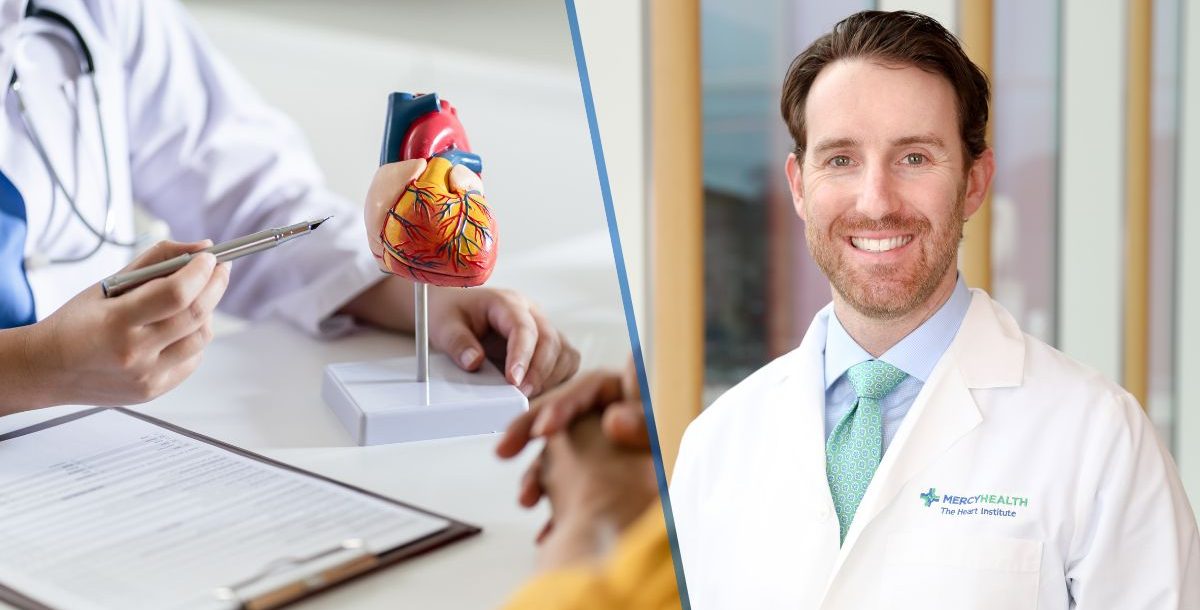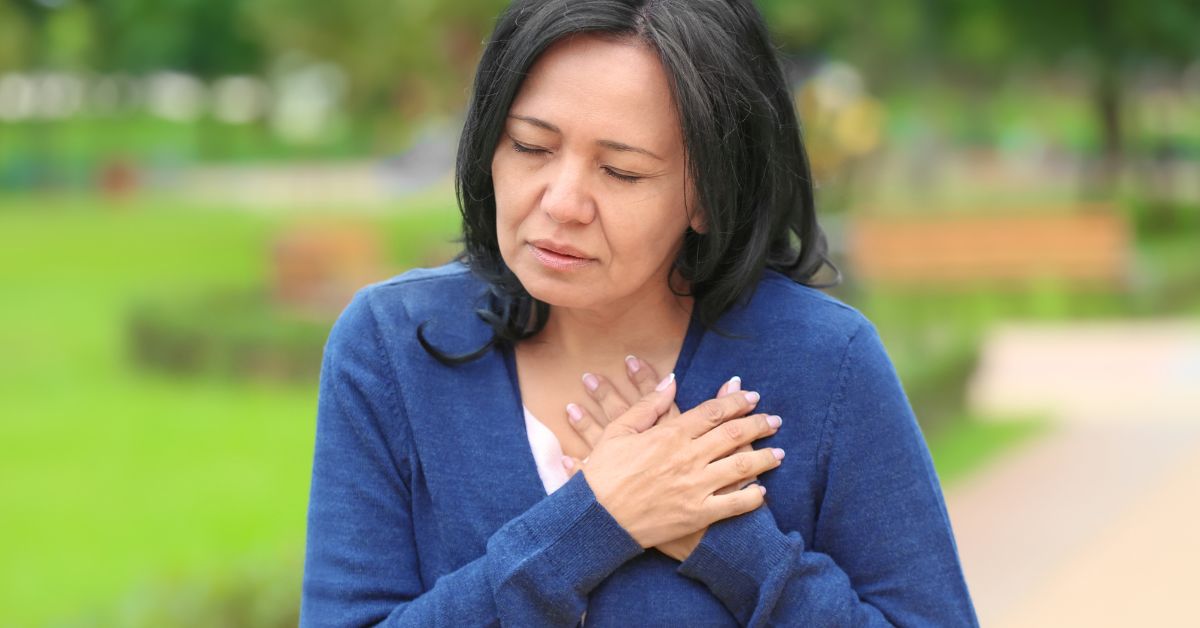So, what is heart disease?
First, let’s start with the heart.
The heart is a muscle about the size of your closed fist. The right side of it pumps blood to the lungs, where it picks up oxygen. The left side of it receives oxygenated blood and pushes it through the body’s arteries. And the heart’s electrical system controls heart rate and muscle contractions.
People can experience a buildup of fatty deposits, called plaques, in the coronary artery walls. These deposits block the supply of blood nutrients and oxygen to the heart muscle, leading to heart disease.
You have a higher risk of heart disease if you:
- Have a diet high in saturated fats, refined carbohydrates and salt
- Are inactive
- Drink too much alcohol
- Experience a lot of stress
- Smoke or are exposed to secondhand smoke
Who usually gets heart disease?
Heart disease, or cardiovascular disease, is the leading cause of death in the United States.
Some people are born with the most common type of heart disease, or coronary artery disease (CAD). CAD affects the flow of blood to the heart – and can cause a heart attack. Others have a family history of heart disease. For others, the risk of heart disease increases with age.
The Centers for Disease Control and Prevention (CDC) reports nearly half of all Americans have at least one of three key risk factors that “age” the heart.
They are:
- High blood pressure: the pressure of blood in your arteries and blood vessels is too high.
- High cholesterol: Extra cholesterol builds up in the artery walls and heart, which slows blood flow.
- Diabetes: Causes sugar build-up in the blood.
“The greatest way to reduce your risk of having heart disease is treating the things that cause it,” Adam Raskin, MD, an interventional cardiologist in our Cincinnati market, says. “Additionally, maintaining an active lifestyle, as regular exercise can both prevent and manage heart disease.
What are the symptoms of heart disease?
Sadly, sometimes there are no symptoms of heart disease until you experience:
- Arrhythmia, or a fluttering feeling in the chest
- A heart attack, often starting with chest, upper back or neck pain or discomfort; indigestion, heartburn, nausea or vomiting; extreme fatigue, dizziness and shortness of breath
- Heart failure, which can begin with shortness of breath, fatigue, or swelling of legs, ankles, feet, abdomen or neck
Additional symptoms include:
- Pain, numbness and/or tingling in shoulders, arms, neck, jaw or back
- Shortness of breath, even at rest
- Chest pain during physical activity that gets better at rest
- Lightheadedness
- Confusion
- Headaches
- Cold sweats
“Becoming unable to do day-to-day activities can also be an early sign of heart disease,” Dr. Raskin adds.
How can I get tested for heart disease?
“I frequently get asked when people should see a cardiologist,” Dr. Raskin shares. “The first thing I would do is speak with your primary care provider. They are a phenomenal source to determine whether your symptoms are suggestive of heart disease and whether you should be checked out by a cardiologist.”
Your primary care provider will ask about your symptoms, your family’s history and take your blood pressure. Your provider may ask you to fast for a blood test to check your cholesterol and may take another blood test for the brain natriuretic peptide (BNP) hormone that rises with heart failure.
Other additional tests your provider may order include an electrocardiogram (ECG or EKG) to check the heart’s electrical activity, echocardiogram to assess heart or valve function and a chest X-ray to look for an enlarged heart or fluid in the lungs.
Based on these findings, your primary care provider can refer you to a cardiologist for further testing or treatment as needed.
What is the best treatment for heart disease?
Treatment for heart disease depends on the type of heart disease you have, your symptoms and other health conditions.
Your provider may prescribe medicationto widen your blood vessels so your heart can beat with less force, manage cholesterol levels and slow plaque build-up. Other medications can control blood sugar and help you manage your weight.
You may also need a procedure or surgery. If your provider suggests this, ask about benefits and risks of opening arteries and bypassing blocked arteries.
Cardiac rehabilitation, another treatment option, is a supervised program with physical activity and healthy lifestyle education for anyone recovering from a heart attack, heart failure or some types of surgery.
And something everyone can do, even without diagnosed heart disease, is make heart-healthy lifestyle changes, such as:
- Eat a healthy diet, including fruits, vegetables and whole grains
- Be physically active
- Maintain a healthy weight
- Limit alcohol intake
- Manage stress through relaxation techniques, meditation and more. Ask your provider for suggestions
- Quit smoking
- Keep high blood pressure, high cholesterol and/or diabetes to healthy ranges
Can heart disease be cured?
Heart disease cannot be cured, but it can be managed. And luckily, today doctors understand heart disease more than ever and research continues.
To manage heart disease you can:
- Get routine medical care, follow provider directions, take medications and report new symptoms.
- Manage medical conditions that can impact your heart condition.
- Take advantage of cardiac rehab – either before or after heart attack – to reduce your chances of hospitalization and even death.
- Talk with your provider about mental health support, such as therapy or a support group.
- Prepare an advanced care plan to receive the care you want if your health declines.
Learn about the heart and vascular care services we provide at Mercy Health.






